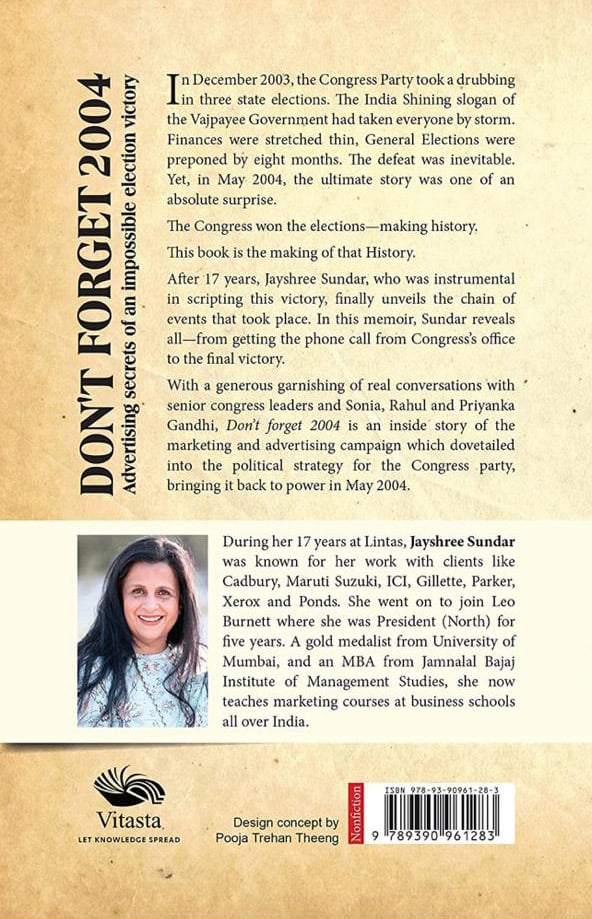
The tortoise racing against the hare wins only in the Aesop’s fable. In real life rarely this miracle happens. Such a magical event occurred in 2004. If you want to know Who? How? Where? this thrilling event happened, please read this book: Don’t Forget 2004. A real-life political drama in which all of us Indians participated is unveiled in the style of a cloak and dagger fiction. The book holds a special message for people in PR and Advertising who are often called upon to revive a legacy brand in slumber.
In 2004 the Bhartiya Janata Party led by A. B. Vajpayee was cocksure of winning the Lok Sabha election. Using huge government funds, the party had launched a slick campaign under the tagline ‘India Shining’. A Vijay Rath roadshow led by Lal Krishna Advani was criss-crossing the country. In fact, the ruling alliance had advanced the election by several months before the full term of the government. All opinion polls were predicting the return of the Vajpayee led National Democratic Alliance. No poll pundit expected the Indian National Congress headed by Sonia Gandhi, reviled as a ‘foreigner’, to revive the party and win respectable number of Lok Sabha seats.
The unexpectedly the Congress won more seats than BJP. The poll outcome was summarised by the outgoing prime minister Vajpayee in a one-liner:’ The loser did not anticipate, nor the winner expected it’.
Answers to Why? How? Who? question about the 2004 poll upset have not been studied in detail until now. The book is authored by Jayshree Sundar, a veteran of the advertising and marketing world, who headed the Leo Burnett’s Delhi office. What goes to enhance the authenticity of her answers to the above questions is that she personally steered the Congress Party’s communication campaign that drew holes in the India Shining advertising blitz by BJP.
It all began when the advertising agency Leo Burnett began exploring the possibility of looking at the Congress party as a ‘brand’ like any other and examining its connection with the consumer. This was an out of box approach that needed testing at the ground level. When the agency teams fanned out to different parts of India to listen to the consumers, the voices they heard surprised them. The noise of the ‘India Shining’ campaign had bypassed the large majority of the consumer-voter in rural hinterland as they could not relate themselves to the theme. The urban opinion pollsters had not gone to them. This was a ‘Eureka’ moment for the agency. The next task was to distance the consumer from the competition and connect the consumer with the client brand. Thus was born the Congress dialogue with the ‘Aam Admi’ (he and she) as the primary consumer of the brand. He and she were the prima donnas. The party (brand) projected as the bridge between the ‘Aam admi’ and their aspirations.
The author, Jayshree Sundar’s narrative follows the style of a thriller; the need for secrecy and surprise, the groundwork to create an undiscovered groundswell in Bharat as different from the urban India. She does not dominate the narrative with the capital ‘I ‘, a common weakness of autobiographical story tellers. She amply highlights the hard work of the team (successful communication is always an outcome of teamwork) behind her and the deft political hand of the client. What comes out of the book was that the client, INC carrying a proud legacy, did not have the know-how to ride on it to power and glory. There is a lesson in this book for all political parties.
This book presents a powerful case study demonstrating that strategic communication works, with the usual caveat-when other conditions are fulfilled.




